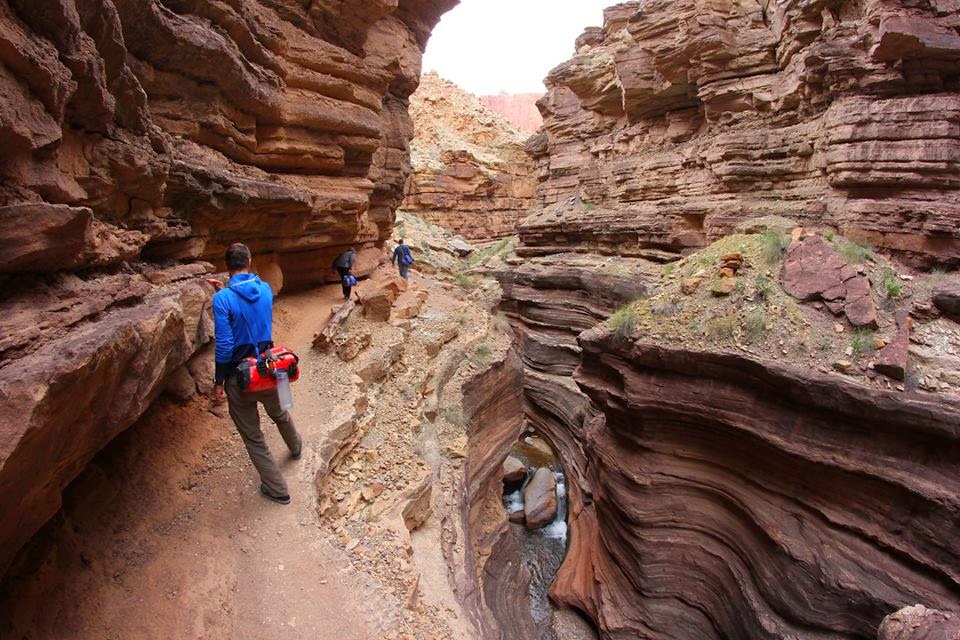
On any given Monday, conversations buzz around ERG’s communal cubicle workspace with stories of weekend skiing, rock climbing, surfing, bicycle rides, trail runs, skijoring, LARPing, lumberjack games… you name it, ERGies probably do it.
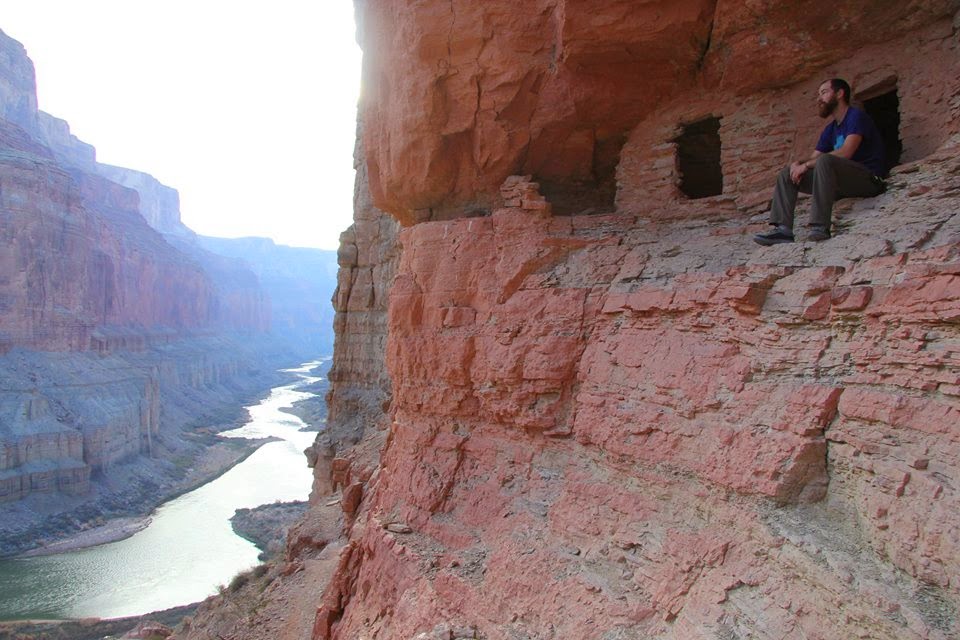
A good number of ERGies would attest to having developed a deep environmental conscience from time spent in the wilderness. For many of us, whenever we are not buried in reading, writing, and problem sets, we are finding renewal through various outdoor adventures and activities. Fortunately for us, the Bay Area is situated pretty well whether you’re into mountains, forests, or the ocean. Or if you’re like me, you like to hang out in the Earth’s drainage ditches: rivers.
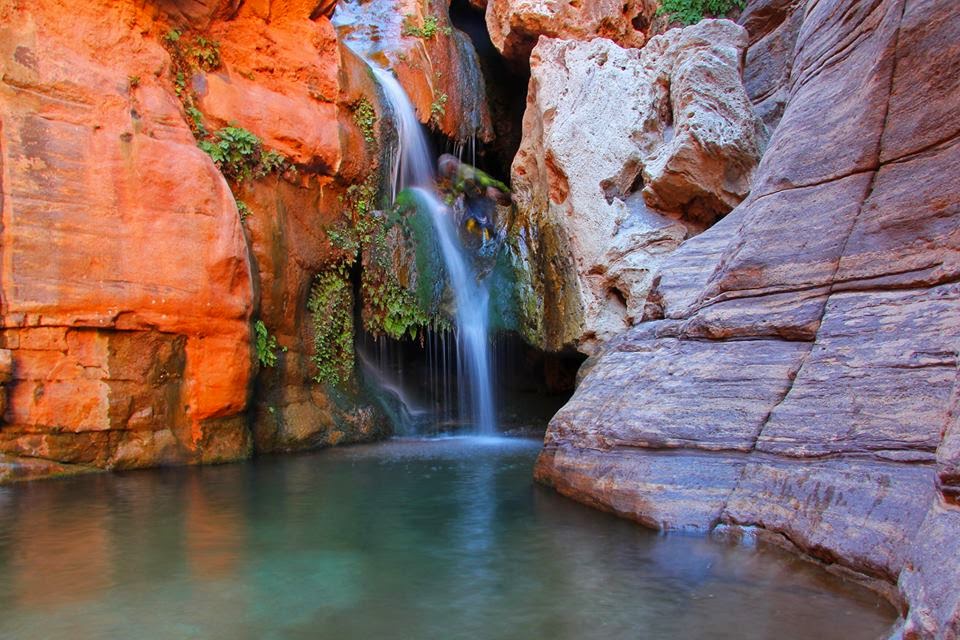
My passion for rivers led me to leave California over winter break and head to the biggest drainage ditch in the country: the Grand Canyon. Although permits to run the river are extremely competitive to win through the National Park Service (NPS) Lottery, the winners occasionally have to back out of their trips, freeing up their coveted permits. In these cases, the NPS issues “follow-up” lotteries, which tend to be less competitive (especially for river trips in the dead of winter around the holidays).
Through this process, a few friends and I were lucky enough to secure a Grand Canyon permit, which launched on December 19, 2014 (leaving barely enough time to finish my final exams!). We would be kayaking 279 miles in 13 days without raft support, meaning we had to cram 13+ days of food and gear into our kayaks. It is a big, committed trip–requiring a great deal of planning and preparation–from what food you’ll bring along to how you’ll go about packing your solid waste. I should have consulted with Emily (from my ERG cohort) for some creative ideas on my fecal sludge management! (See photo below.)

As I made the long drive from Berkeley to Lee’s Ferry–the put-in of the Grand Canyon–I reflected on what may be a slight contradiction in my values when it comes to my own carbon footprint: I willingly drive long distances in order to spend time in the wilderness. Here in Berkeley, I live a fairly efficient urban lifestyle and try to minimize my carbon impact. Admittedly, I do own a car, but it sits parked on the street for weeks at a time while I ride my bike everywhere (my steering wheel literally had cobwebs on it earlier this year). I, like all ERGies, consider it a part of my identity to live as efficiently and sustainably as I can.
Yet, here I am, driving over 2000 miles round-trip just to float down a river for two weeks. Is this carbon impact an acceptable trade-off for the enjoyment and renewal I expected from this adventure?
My close friend Josh–one of 3 other guys running the river with me–provoked these questions further. Just before leaving for the canyon, Josh graduated with an MS from the University of Michigan’s School of Natural Resources and Environment, where he studied grid integration of renewable energy. While floating down the river, Josh and I began discussing: How long would we have to spend in the Grand Canyon to balance the carbon impact of traveling there, compared to the baseline of our normal urban, energy consuming lifestyles? The assumption, of course, being that once we are in the Canyon, our carbon footprint drops to nearly zero (aside from food and cooking).

Having taken Energy and Society (ER200) in the fall semester of 2014, I had gained the tools to do a simple back-of-the-envelope equation to attempt to answer this question! So, for the energy-nerds / wilderness lovers among us, here is a simple estimate of the number of days I would have to spend in the Grand Canyon to offset the CO2 emitted to get there in the first place.
A few key assumptions:
- Food-related carbon emissions are the same in the Canyon as they are at home (let’s ignore the fact that I was eating around 5,000 calories per day in order to paddle 25-35 miles each day and stay warm!).
- The round-trip journey to and from the Grand Canyon (including shuttling my car to the takeout at Pearce Ferry) was about 2,000 miles.
- My car averages about 24 miles/gallon (the boat on top adds a lot of drag!).
- I will use the EPA estimate that burning one gallon of automobile gasoline emits ~8,887 grams of CO2.
- For my CO2 emissions here in California, I am assuming the average CO2 intensity of California’s electric grid to be 277 grams of CO2 per kilowatt-hour.
So how much CO2 did am I responsible for emitting based on this 2,000 mile drive?

Using a (very) crude energy audit based on a typical day here in Berkeley, I calculated my average daily CO2 emissions to be roughly 3.75 kg per day:
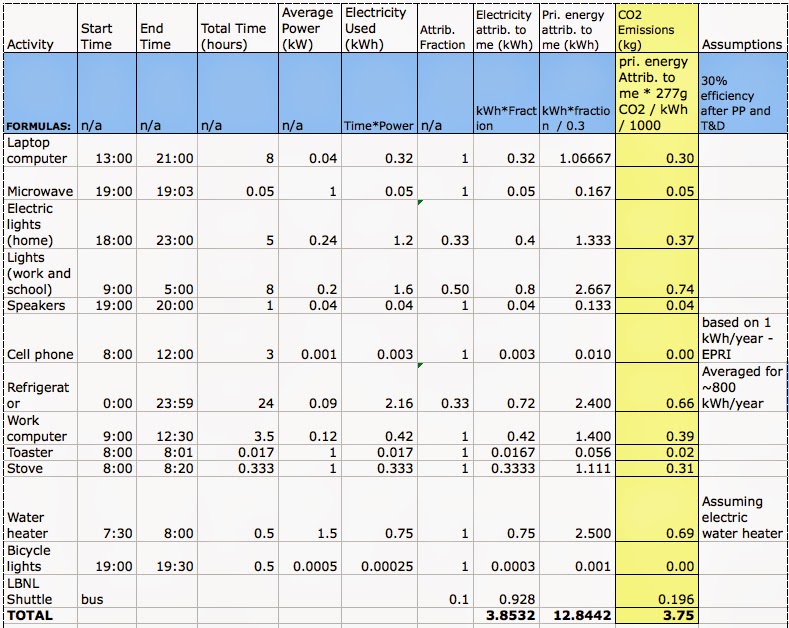
So how many days would I have to spend in the Grand Canyon in order to offset the CO2 emissions from driving there (compared to a baseline of a typical “Berkeley Day”)?

Of course this is based on a lot of assumptions and rounding, but at least this number gives me a general ballpark idea. I was hoping for a smaller number–so hopefully whoever graded the ER200 problem sets can find an error in my calculations 😉
While I would LOVE to spend 198 days in the Grand Canyon, the maximum permit length is ~35 days. Next time I’ll just have to bring a few more ERGies along with me to the Canyon! Check out some more pictures and a short video from the trip below!
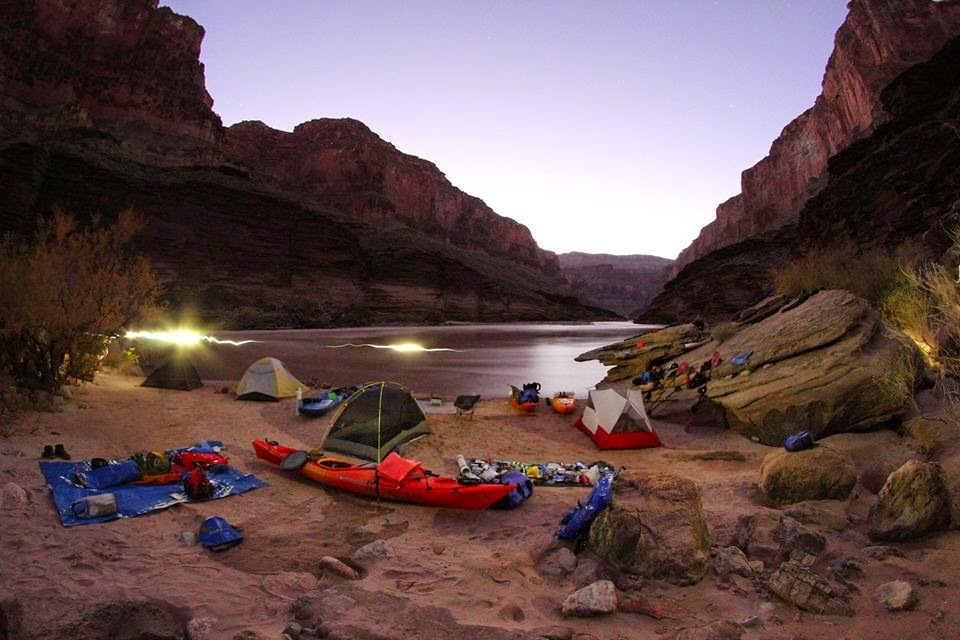
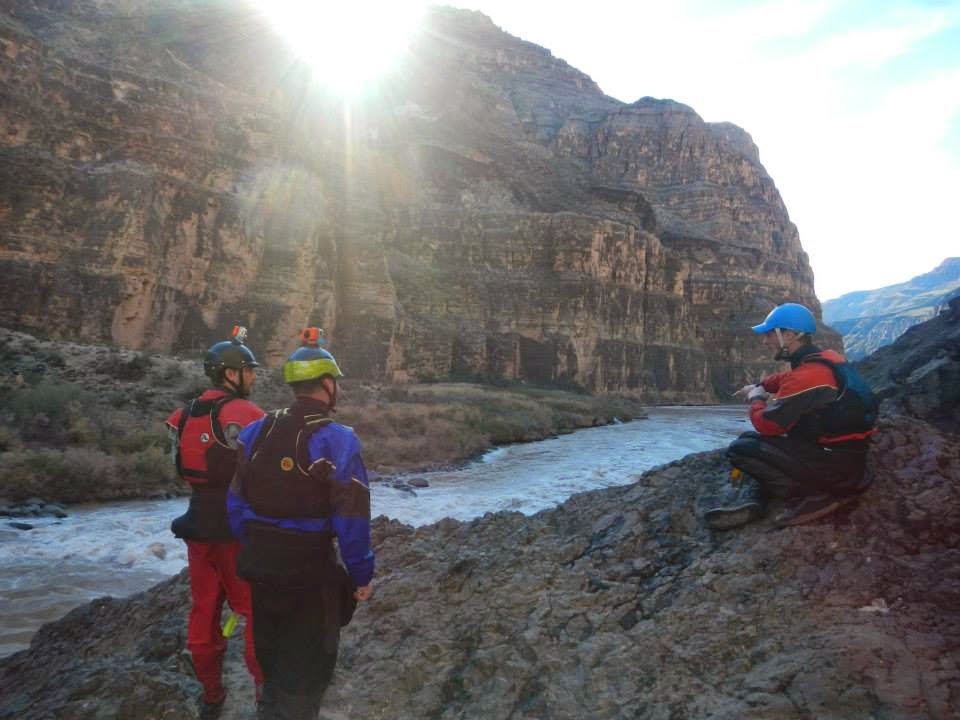
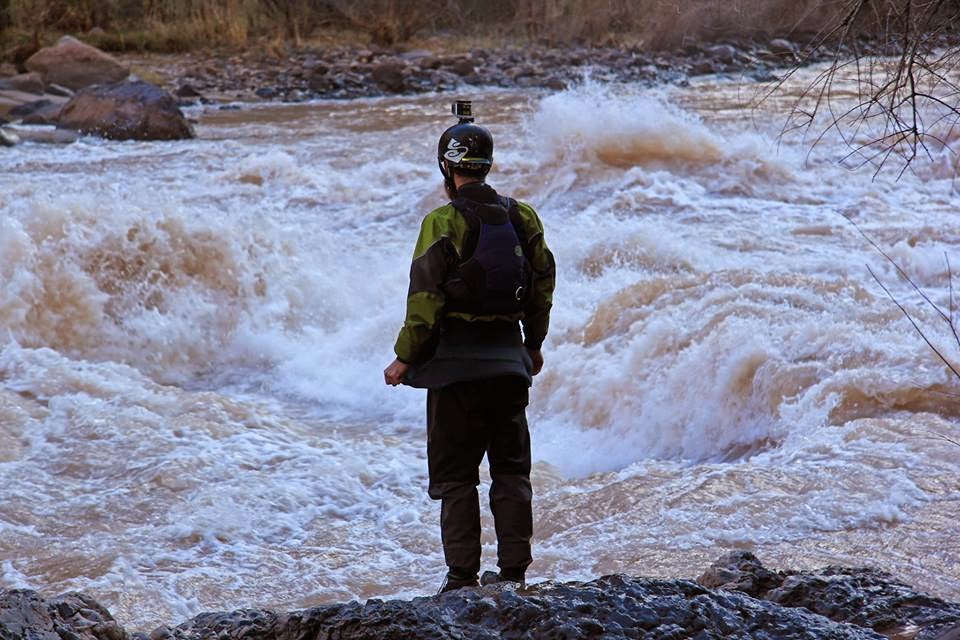
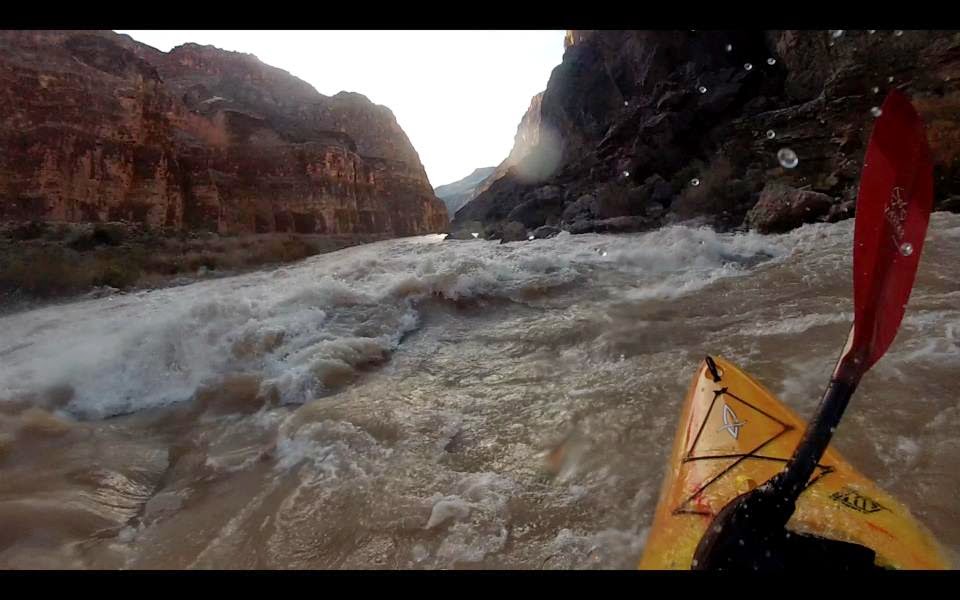
Header image: Hiking Deer Creek Narrows (Photo: Jonathan Sisley)